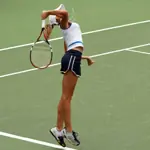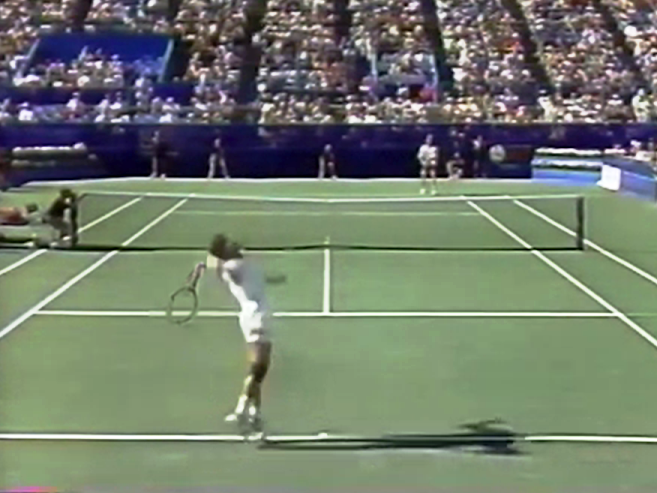Very Interesting Point in Jay Berger Tennis Channel Academy Show
Technical -
There was a Tennis Channel Academy show, "USTA Player Development", broadcast April 2, 2013 in our area.
Jay Berger was included coaching the serve. See minute 26.
He discussed a point that I've been confused about regarding the 'back scratch'. He used a term that I had never heard before - "racket leaking" - with regard to the 'back scratch'.
He also mentions briefly
internal shoulder rotation.
For the leg thrust phase of the serve where the
stretch shortening cycle is being used:
CORRECTION - The forearm-racket angle does not appear in line for most servers with camera views from the side. Viewed elbow on as in the Henin picture below it does appear straight in the trophy phase. In the Henin pose below her racket is toward her head. See high speed videos.
1)
See CORRECTION above. Forearm-Racket in Line. The forearm and racket should be roughly in line and at a right angle to the upper arm when the leg thrust phase of the serve begins. When the shoulder rises due to the leg thrust and other motions this forearm-racket to upper arm angle causes the shoulder joint to
externally rotate and stretch the
internal shoulder rotators (lat & pec). When the forearm & racket are in a straight line & at 90° to the upper arm, the moment of inertia of the forearm-racket is maximized. As soon as the wrist breaks to allow the back scratch, the moment of inertia decreases sharply. The racket has not yet "leaked" according to Jay Berger's terminology.
.............................................
After the shoulder/clavicle serve is mastered, the next step in the progression is to develop a serve with the racket starting the "trophy position" -- the elbow starts with a 90 degree band and it (the elbow) is pulled back and is directly in line with the shoulder tilt.
I currently use this "trophy" serve for my right-handed serve. With this serve variation, the server should make certain that they achieve a good (deep) racket head drop (what some refer to as the backscratch position). Many servers do not achieve an adequate racket head drop.
= Trophy position
2)
Forearm-Racket at an Angle. At some point after a good shoulder stretch is achieved, the wrist is allowed to let the racket drop down on the back - to the back scratch position. He calls this wrist joint motion 'letting the racket leak'. He discussed that the racket
should leak
but not too early because the stretch phase needs the forearm and racket more in a straight line. When they are in a straight line & at 90° to the upper arm, the moment of inertia of the forearm-racket is maximized. As soon as the wrist breaks to allow the back scratch, the moment of inertia decreases sharply. This can happen too early during the leg thrust before a good stretch is achieved.
....................................................................................................
I currently use this "trophy" serve for my right-handed serve. With this serve variation, the server should make certain that they achieve a good (deep) racket head drop (what some refer to as the backscratch position). Many servers do not achieve an adequate racket head drop.
............................................
"Backscratch" position:
This video shows both the forearm-racket in a roughly straight line followed by the wrist joint motion allowing the racket to go more into the back scratch position. Type of serve unknown.
https://vimeo.com/63688133
These videos of another service motion show some variation and not as much wrist joint change for the racket drop. Racket is out to side and not behind the back. Type of serve unknown.
https://vimeo.com/63688134
Another similar serve.
https://vimeo.com/63709517
This cleared up a confusing phase of the serve for me as he identified two things that I have seen in high speed videos and explained what is going on and a critical piece of timing.




